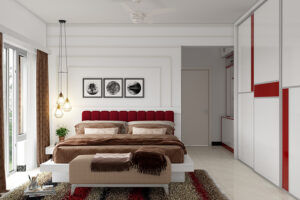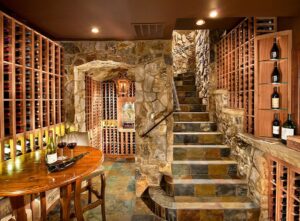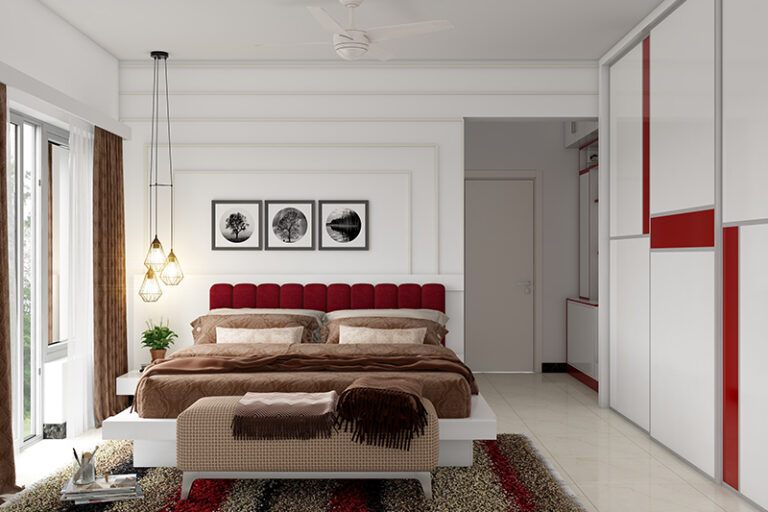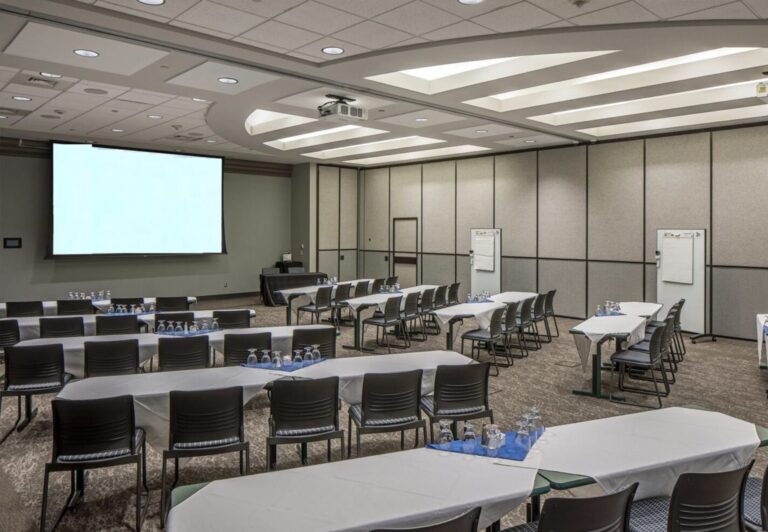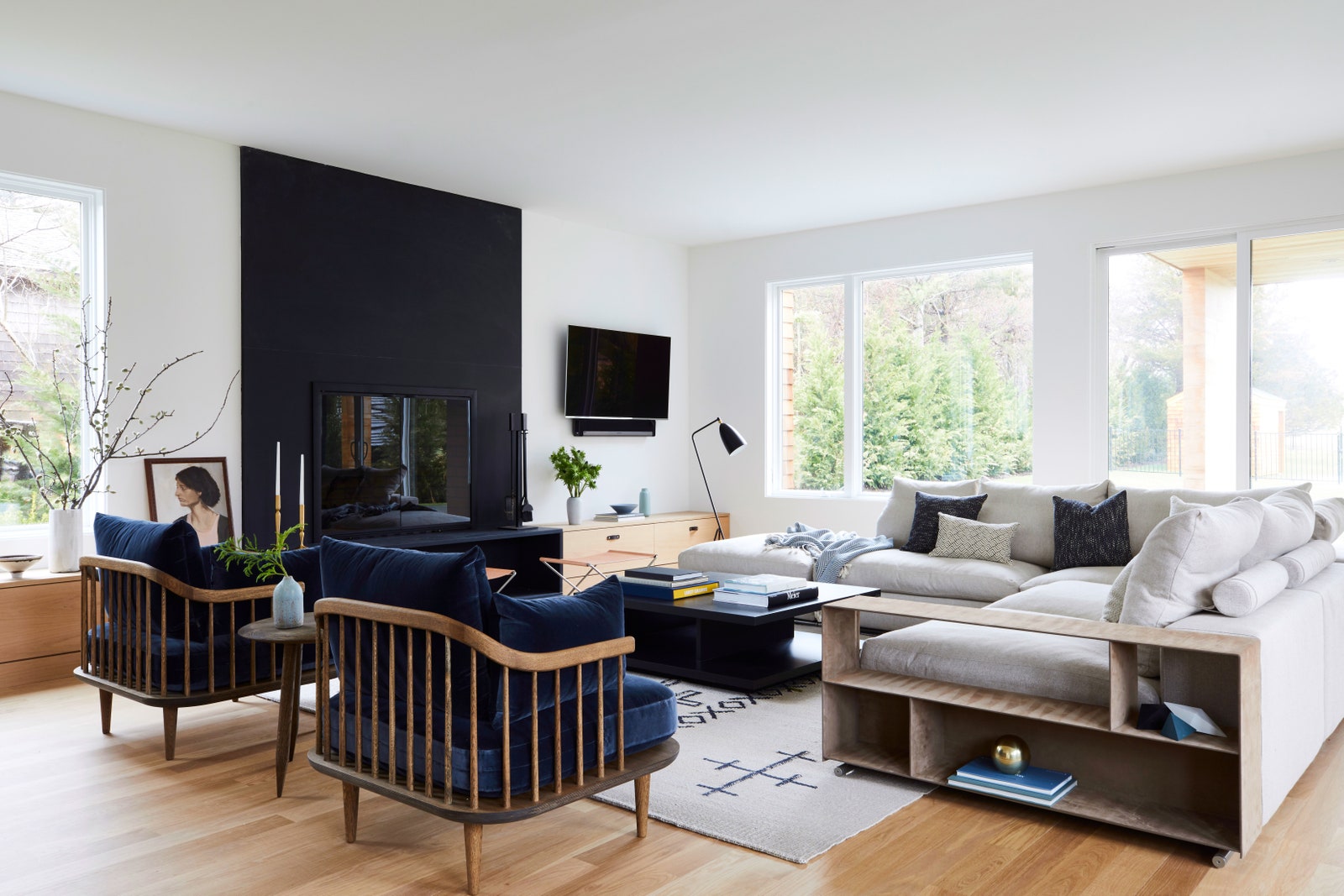
In arranging a living room, each item is of great importance. You can’t just force the space into furniture and hope that the interior will be cozy. It is important to consider many nuances due to which the design will look harmonious.
Living room furnishings are varied. Their number and purpose are subject to the room’s functional areas and the conceived design idea. Therefore, it is good if there is a possibility of updating an existing set of furniture. In this case, you can pick up the details in the hall that correspond to the modern view of functionality.
It’s a completely different matter if the budget is limited. This poses certain difficulties and makes it necessary to play up the shortcomings of the furnishings visually. The situation is especially aggravated by the lack of space, in which space is often overloaded with furniture, depriving the interior of air and making the situation difficult. These features include an open space layout and options for small-sized one-rooms, in which families of more than two people live.
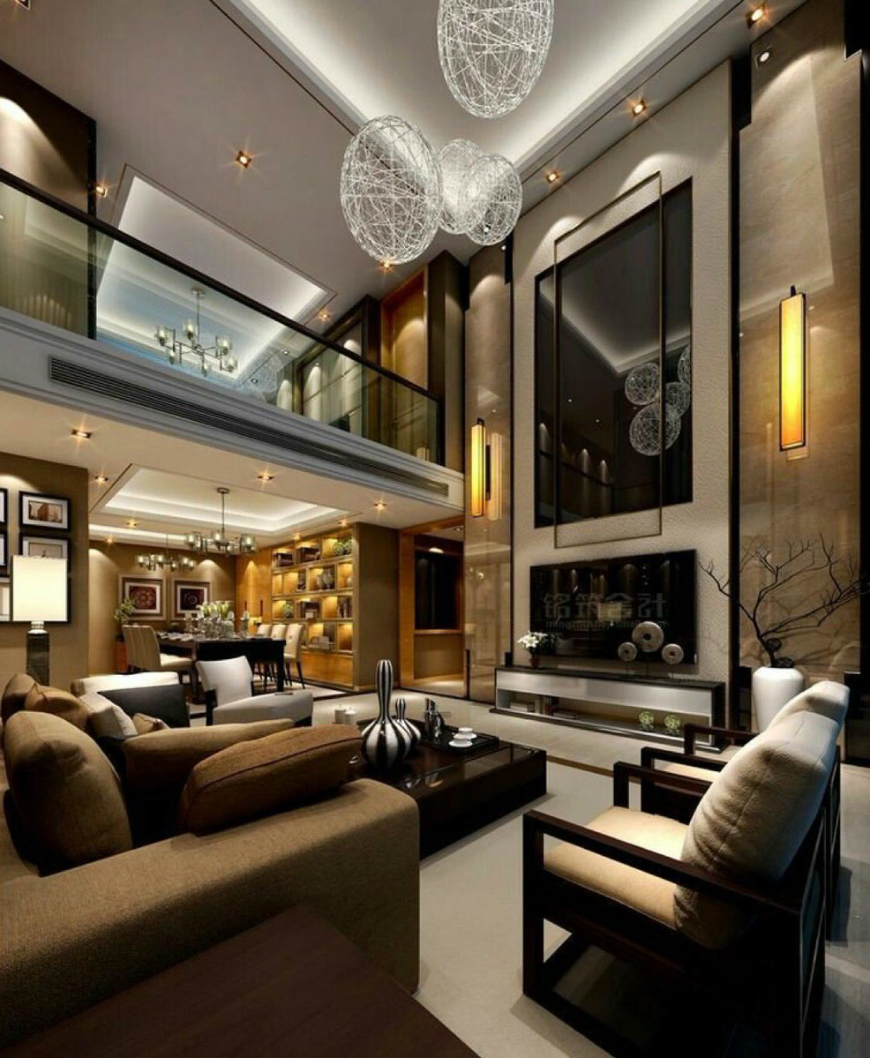
The features of the room itself matter. Often it is it that determines its place for each detail. This can be influenced by windows, doorways, the height of the walls, protrusions, niches, broken perspective. In addition to narrow doorways, a negative factor is the sloping walls, which impose severe restrictions on furniture arrangement.
Note: The task of a harmonious interior design is to transform the room’s shortcomings into its advantages, which is possible with a thorough approach and study of each ledge.
The design approach will allow, by placing furniture, to fit into space the necessary set of interior details so that the interior composition will look stylish and airy. At the same time, the design idea considers the functionality of each element of the arrangement and its pleasant aesthetic perception.
What is Important?
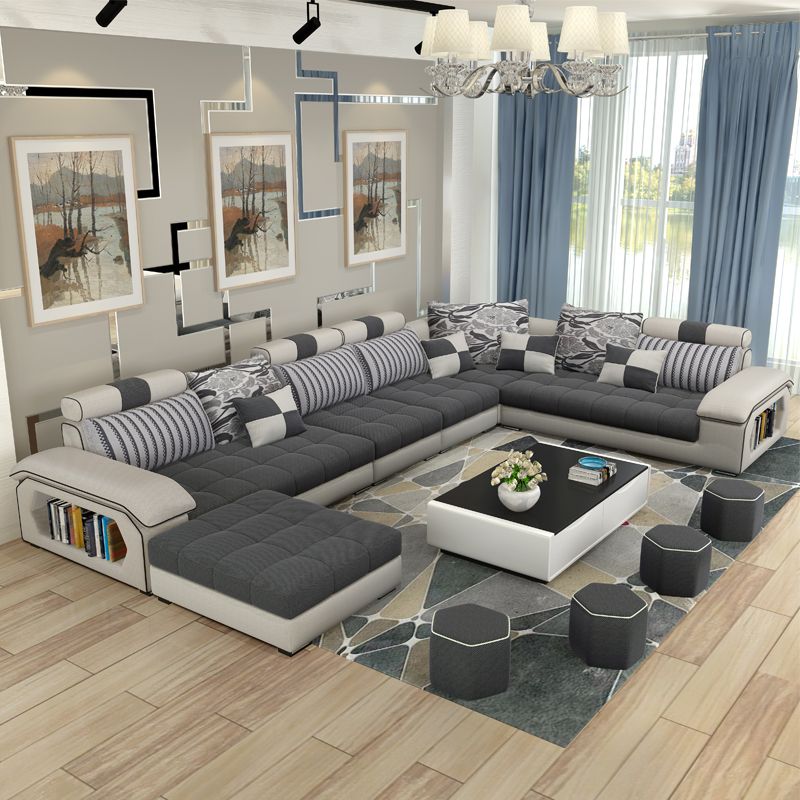
The furniture for the living room is different from the furnishings in other rooms. Its purpose is to create a relaxing atmosphere. The living room is the heart of any home, so it is vital that every household member likes to be in this room. Therefore, the atmosphere should be homely, cozy, which is achieved by purchasing upholstered furniture, a coffee table, a wardrobe, a dining area with a table and chairs.
Note: However, not everything is so simple: the furniture must correspond to the desired style, be selected in color, consider the background of the walls, and rely on the level of illumination of the room.
For example, if the living room windows face the north side, in addition to the chosen size and model, you will have to play with the color to fill the room with warmth and light. The lamps can partially help with this. However, the color of the furniture must be successful. Otherwise, not a single lighting device can correct the imbalance of the interior. Furniture is not selected just because you like its color: the overall picture of the interior is important.
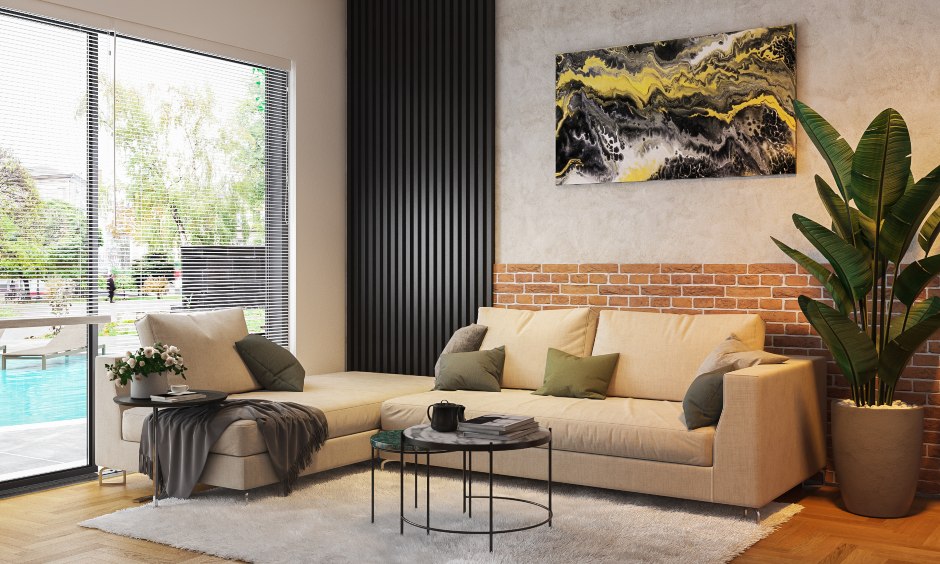
Note: There is another nuance: the larger the room, you should arrange the more details. Otherwise, against the general background, the corners will seem uninhabited, which outwardly will be striking, depriving the interior of its expressiveness.
We can solve this problem through decor, but it is not always able to replace furniture details. Therefore, in addition to the main set of furniture, you will need small parts, for example, stands for placing table lamps, poufs, shelves.
If the living room is combined with an adjoining room, this opens up more possibilities for placing furniture, allowing furniture to be placed in the most unusual places without closing the space for free movement to the desired room.
Note: Particular attention is paid to spaces with a bay window, which is often set up for a specific purpose, based on what kind of area it is (play, guest, dining, resting place, or study).
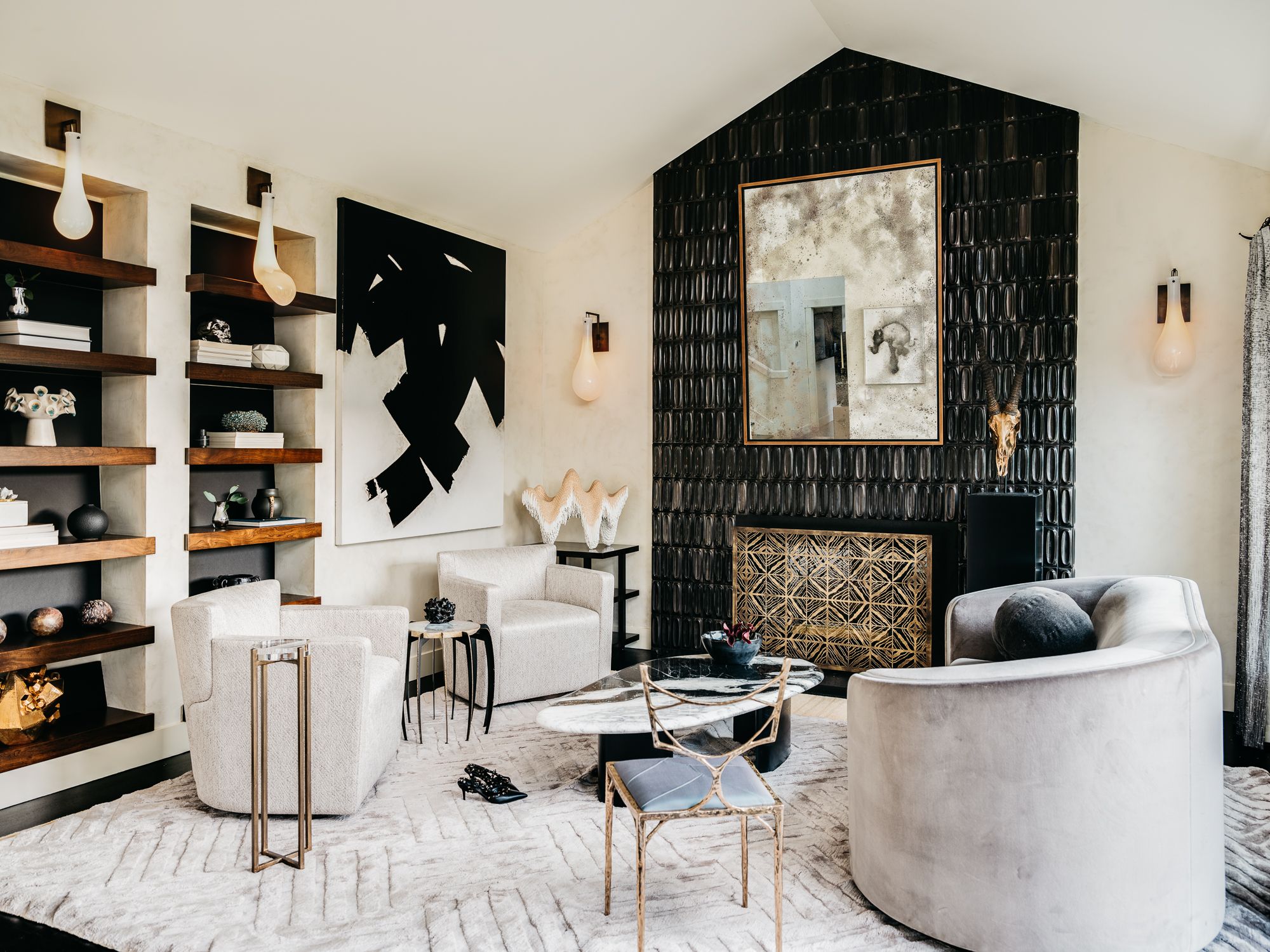
In the modern design of the living room, each piece of furniture must be as useful as possible for use. Therefore, today furniture for the living room is used to relax or sleep: it is often a way to delimit space in the design technique of zoning a room. At the same time, an unobtrusive organization of every corner of the hall is created, which contributes to maintaining order.
Views
Depending on the size of the room, a basic and additional set of furniture details are distinguished. The main furniture ensemble includes furniture for the guest area. This is a sofa and a coffee table. If the living room footage allows, armchairs and poufs are added to the sofa. At the same time, the design approach allows the compilation of a furniture ensemble from objects of different colors. Supplements are poufs, side tables.
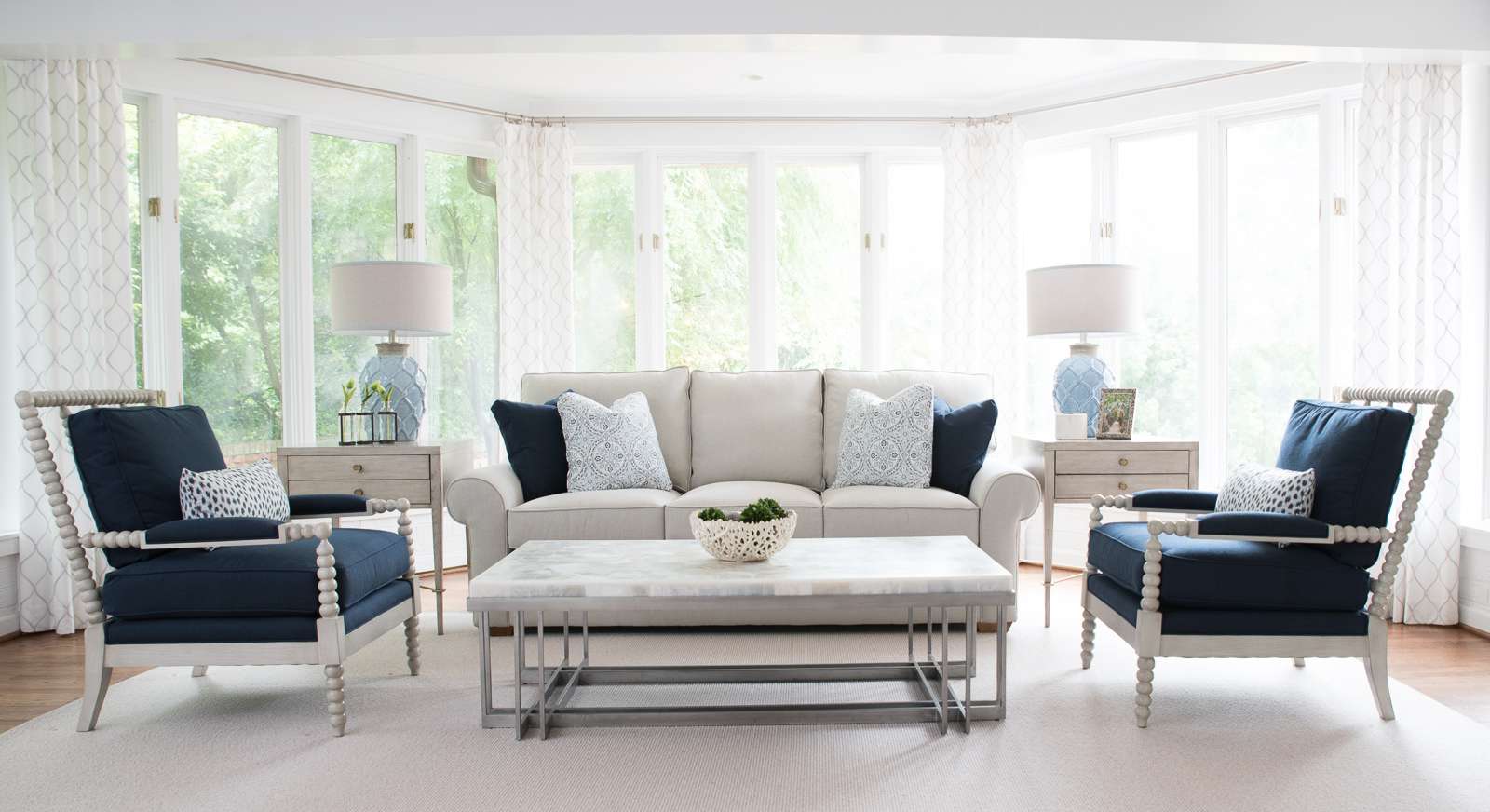
Note: A successful furnishing solution is the use of modular furniture, which consists of separate blocks.
This type of furniture is convenient because, depending on the characteristics of the room’s footage and its layout, you can buy only those modules that fit into the interior most harmoniously. This applies to the sofa, cabinets, shelving, and hallways if the living room is the only open-plan room in the dwelling. First, consider the main details of the living room furnishings that create coziness.
Sofa
The sofa is the main component of the furniture in the guest area. Based on the model’s features, the sofa determines comfort and sets a favorable atmosphere. Therefore, it must be as functional as possible.
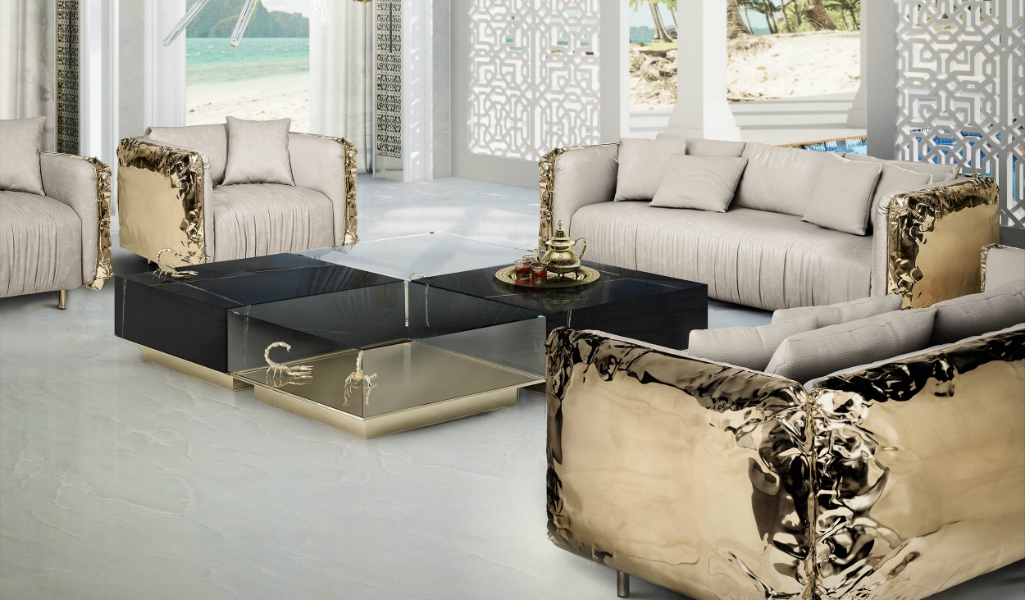
Depending on the purpose, the rules for choosing a sofa are:
- Structural reliability
- The possibility of transformation
- Pleasant appearance
- Spaciousness
- The convenience of users’ location
- The practicality of upholstery
- The convenience of the transformation mechanism
- The possibility of assembling with other furniture
- ease of care
All Existing Types of Sofas can be divided into Two Groups:
- Linear (straight)
- Corner
Both varieties are suitable for arranging a living room, and each type has many advantages. Both categories provide for many unfolding types, which allow you to use the sofa as a full bed if you need to place guests at night. According to the transformation mechanism, sofas are folding, roll-out, swivel. Some varieties provide for a book folding, while others are raised during transformation, then the seat and back are pushed forward and lowered. The third by the type of folding resemble an accordion, the fourth – a folding bed.
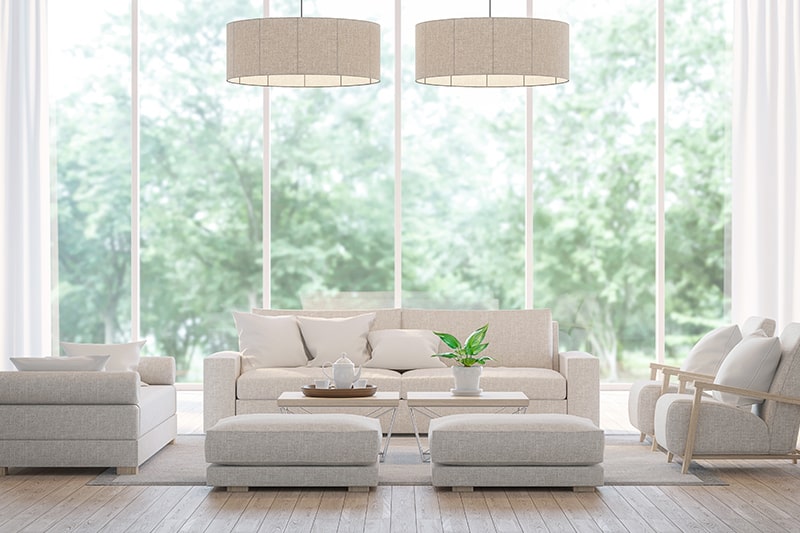
Thanks to a well-thought-out approach, the production considers the universal arrangement of the sofa in the guest area of the hall. Therefore, in most models, it can be placed close to the wall, thereby saving the usable area of the room. In addition, both the linear and angled look of the sofa save space when installed in a corner.
The Design of the Sofa can have:
- The side edges with shelves in the form of a rack
- Corner element with a table
- Armrests with a table
- Spacious inner drawers for bed linen
Armchairs
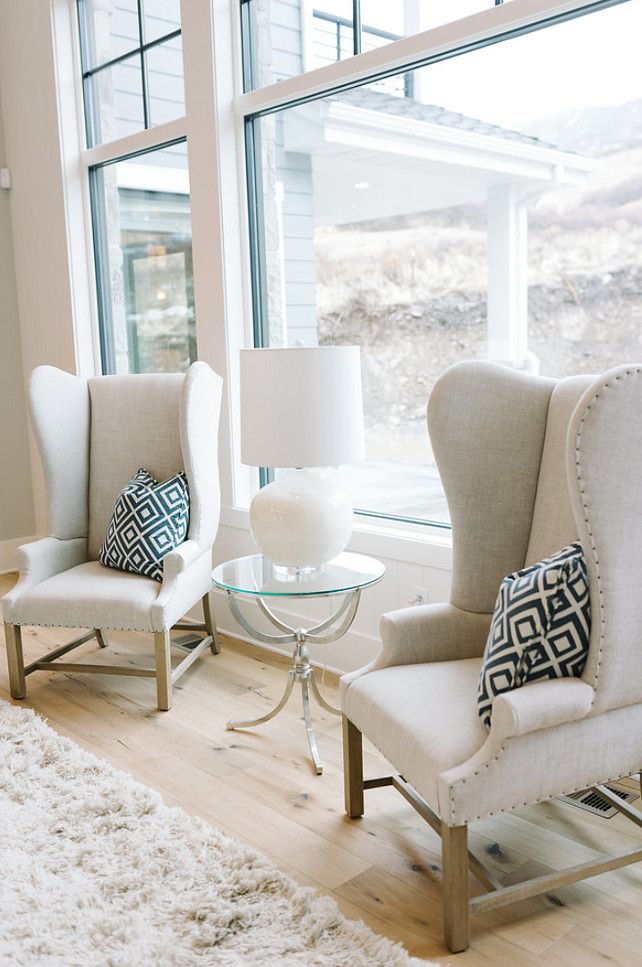
These sofa accessories used to be an integral part of the guest area set. Today, their function is often replaced by an additional sofa or bean bags and individual modules of upholstered furniture, which, if necessary, can be attached to the main sofa. In addition, since the functionality is first for a modern person, they try to buy folding chairs. This allows, if necessary, to accommodate guests for the night.
Note: If you plan to equip the living room in an old style, buy rocking chairs, wicker varieties, or vintage models with a high back.
When the emphasis is on convenience, soft products are acquired. Some design directions allow models of different shapes and colors, so it is unnecessary to buy chairs in pairs and identical. Having a sense of taste, you can combine what at first glance seems incongruous. You can place one product in the guest area, and the second can be bought, for example, for the fireplace area.
Coffee Table
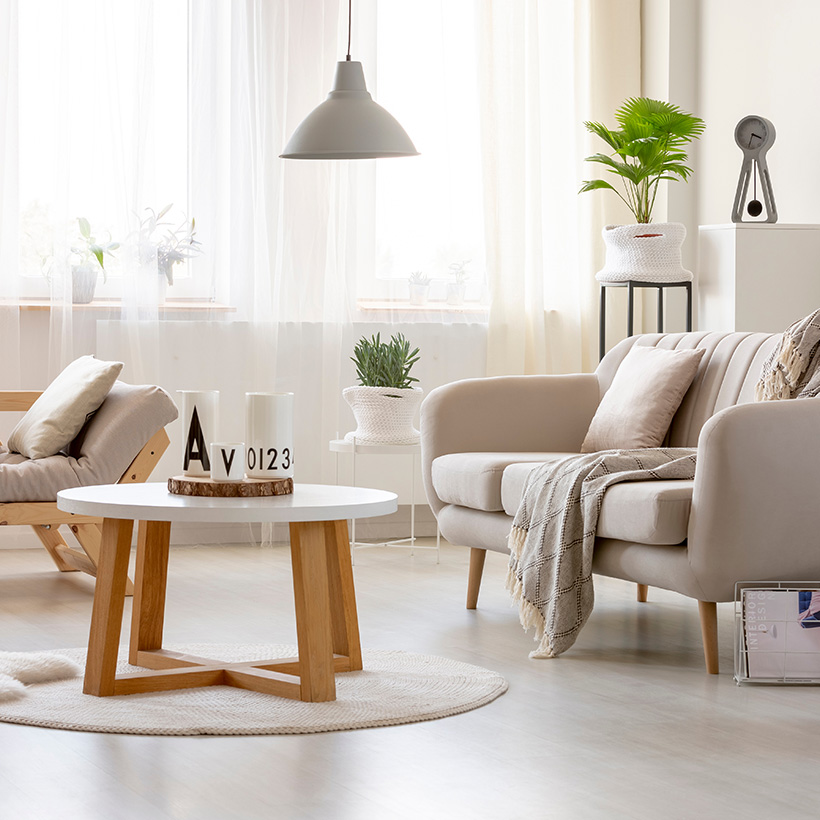
This piece of furniture is a must for the living room: it maintains a hospitable atmosphere of home comfort, is a table for treating guests. In some cases, it is used to place decorative elements (for example, fresh flowers, figurines). Usually, this piece of furniture in the guest area is designed for treating several people. However, these tables are different, and their needs buy them.
Modern functional models are folding structures that can combine a tea room, a work table, and a seating cabinet, which is important for a shortage of space for guests. The purchase of a model is subject to the room footage: for a spacious living room of an apartment or a private house, models are purchased, emphasizing decorativeness.
Note: If the hall is small, they try to buy models with additional drawers. The presence of closed drawers allows you to get rid of small details, the abundance of which creates a sense of disorder in a small space.
Side Table
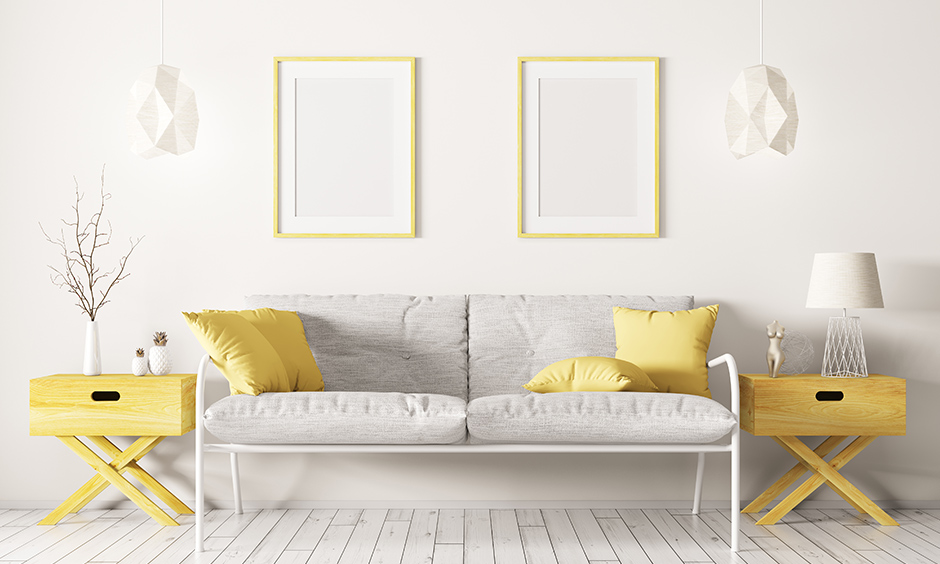
An alternative to coffee tables is attached counterparts. They are higher, convenient for treating, in most cases, mobile: we can move them close to the sofa if you need to work on a laptop, watch a video, a movie, or have a cup of tea. In addition to height, compactness is a distinguishing feature of coffee coffee tables. Such constructions accommodate only the most necessary things on the surface of the countertop. There is enough space for a maximum of two people.
The form and functionality of the structure are varied and depend on the type of material used and the chosen style. For example, with a compact size, a side table may have shelves, drawers. Sometimes it even resembles a mini-chest of drawers.
Note: Some models are creative and have an elongated shape, allowing them to be used when there is a lack of window sill space for flowering plants or a TV.
Rack
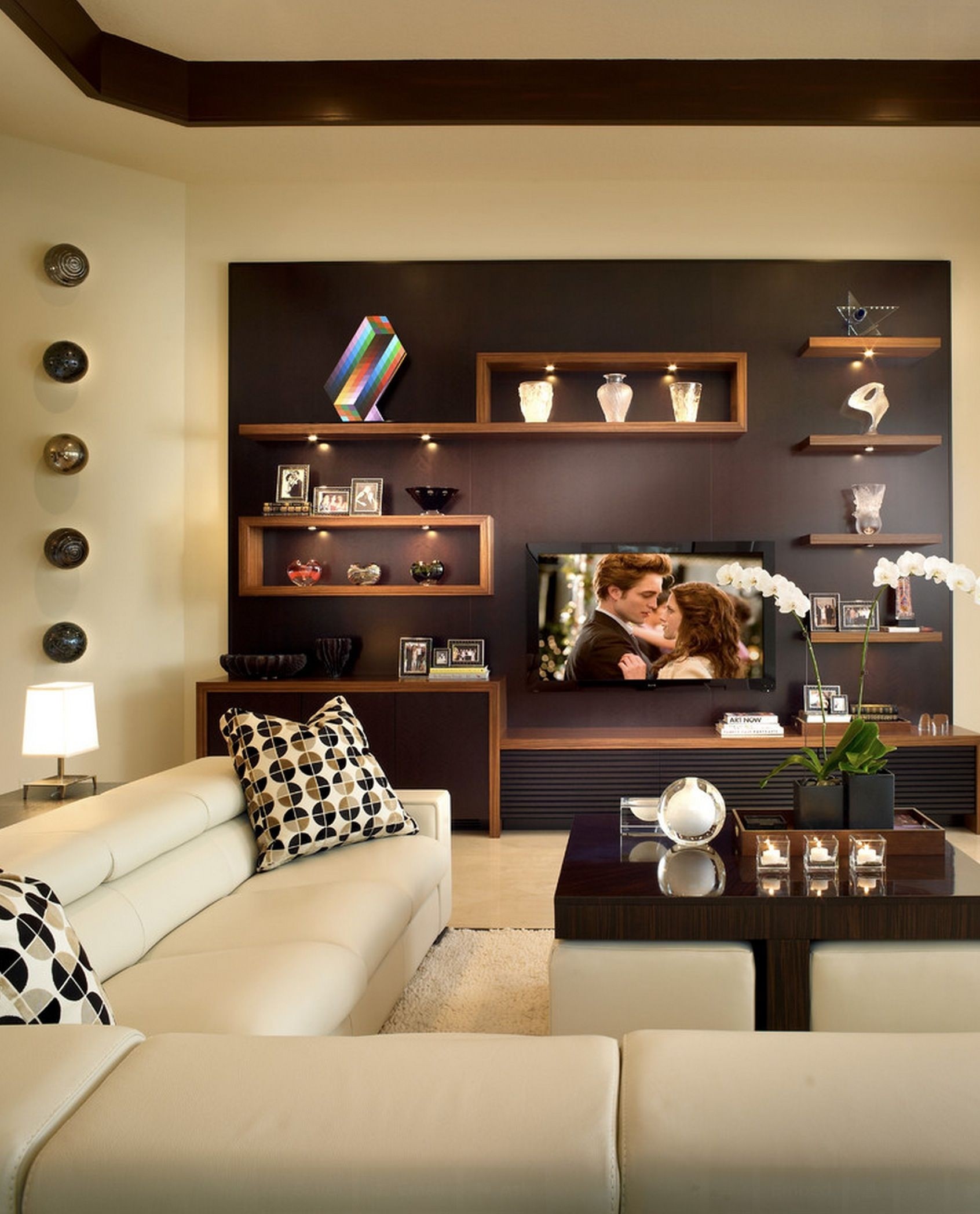
This component of the living room arrangement is an alternative to wardrobes and dressers. In contrast to them, the shelving contributes to an easier perception of space. Outwardly, this is a set of shelves of different sizes, united in a box, due to which the structure does not loosen. Classic models for living rooms are open shelves, which are often closed on the back. This allows you to place this furniture not only against the wall: through such shelves, and you can zone the space, giving each functional zone a clear organization.
Models can be linear, angular, stepped (in the form of a ladder). By the type of installation, they are classic (installed on 4 supports), built-in (built into a niche in the room), and suspended (fixed directly on the wall). Each product has a shallow depth (40-55 cm).
Depending on the Model, the Rack can:
- Consist exclusively of shelves
- Have up to 4-6 closed showcases
- Differ in the presence of drawers
- Have cantilever shelves that extend beyond the mainframe
They allow you to organize a recreation area, equipping the wall opposite the sofa as efficiently as possible. Other varieties may resemble modular cabinets or slides, differing in the different heights of each module. Versions with supports and mounted models can withstand much weight, and mounted counterparts are not designed to accommodate heavy objects. Nevertheless, we can use them for books, decorative vases, soft toys, and living plants.
Cupboard
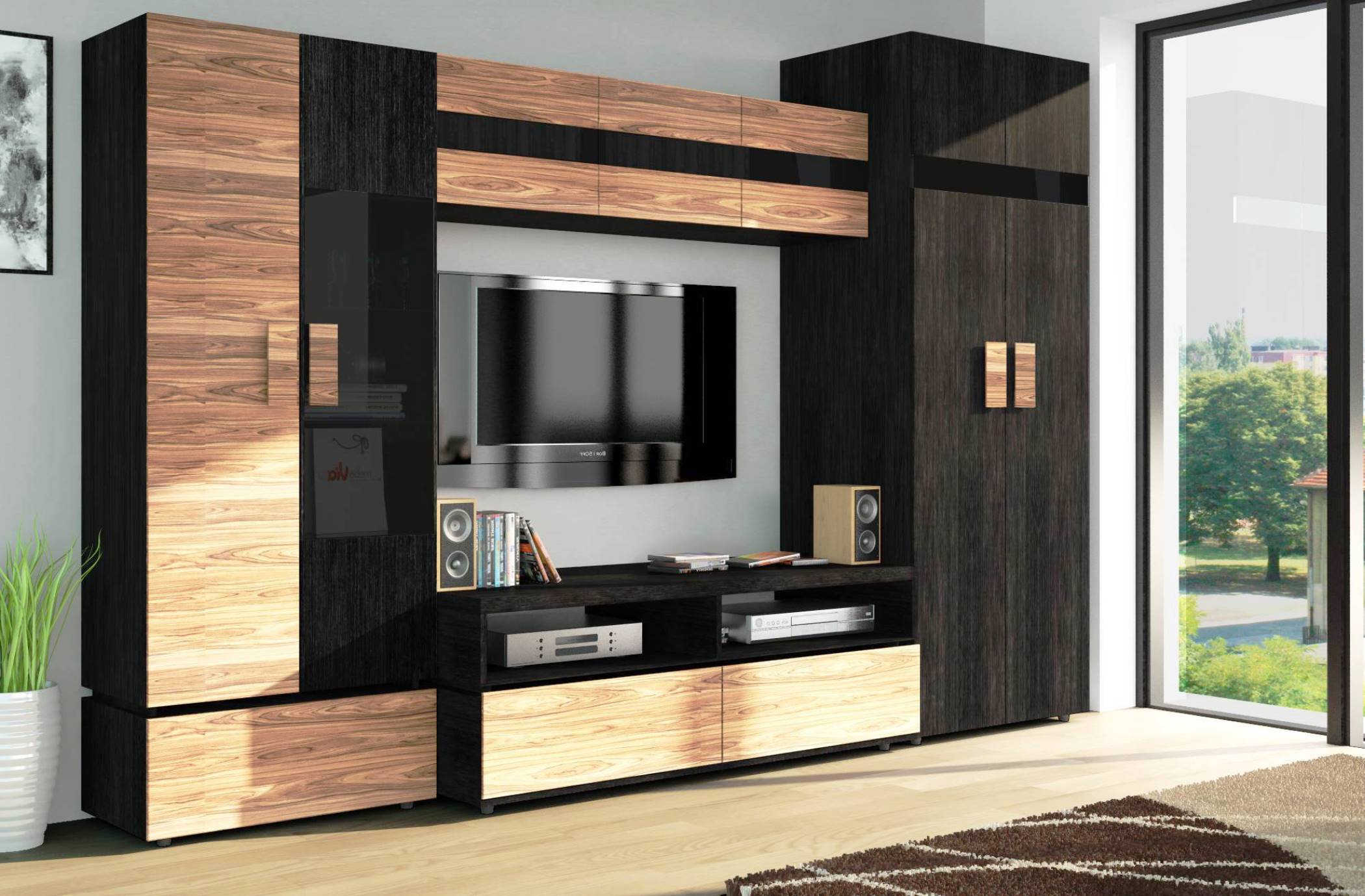
Those who pay tribute to tradition add a spacious wardrobe or wardrobe to the main set of furniture in the guest area. At the same time, modern models are distinguished by an interesting design and compactness, due to which they do not look massive and fit into the overall look of the interior appropriately and stylishly. This furniture is more often an element of furnishing rooms with a lack of free space. It allows you to remove small things from the visible space, as well as clothes, bedding.
Note: Such furniture in the living room is installed mainly in small-sized apartments, where it is important to use every centimeter of usable area.
If the style requires it, they purchase a display cabinet. Today, such furniture is the focus of the interior design. It differs from the wardrobe in the presence of glass fronts. This demonstrates small accessories of the interior composition (beautiful dishes, figurines, seashells), which bring the desired theme into the design. Such a cabinet looks lighter than the classic counterpart. It does not overload the space and contributes to the organization of the room. If necessary, it is used to divide the room into separate functional zones, like a sofa.
Dinner Zone
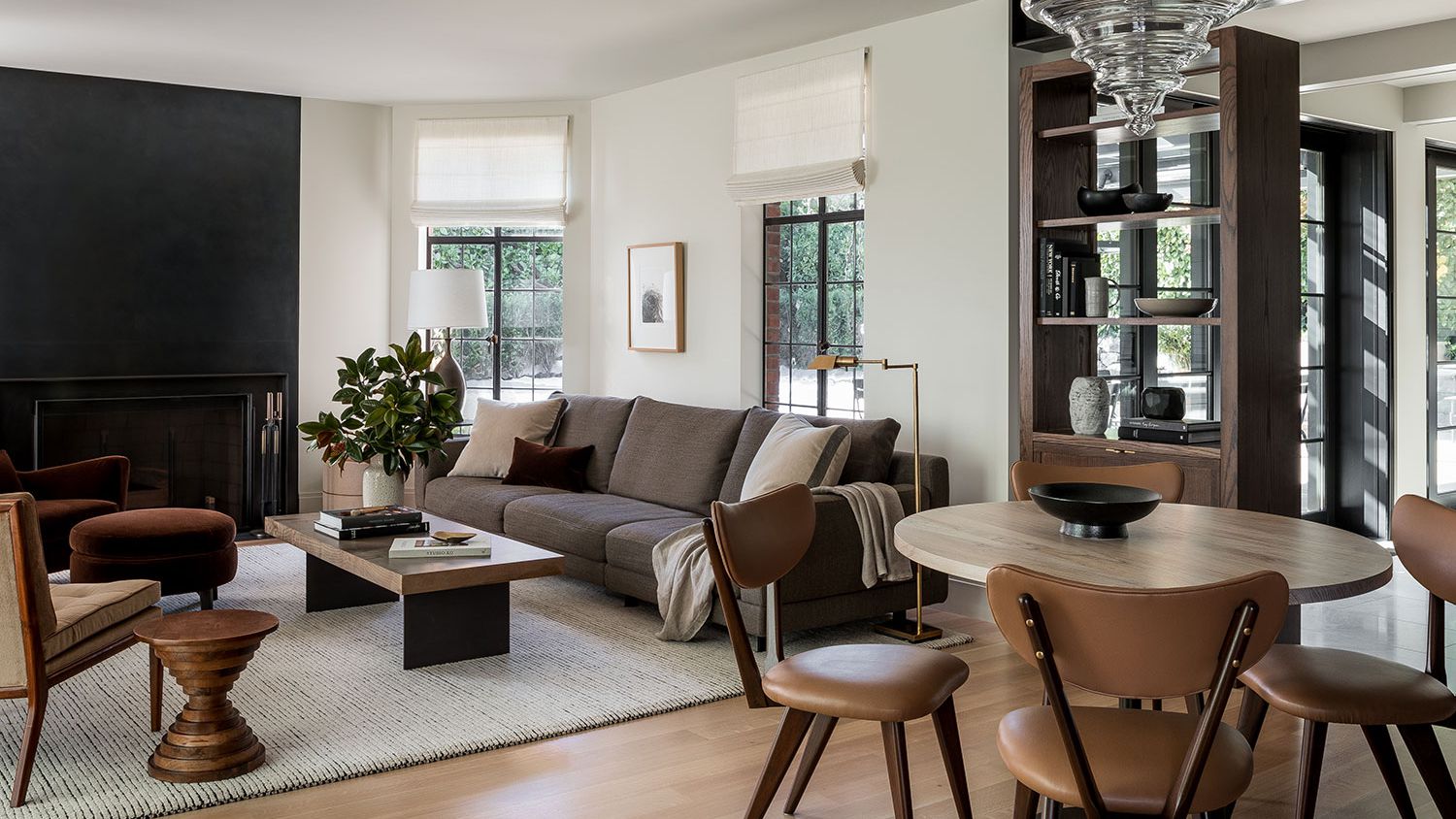
The dining table and chairs are part of the living room interior if it has a dining room. This is mainly furniture for spacious rooms with a separate dining place. Dining room furniture is a set consisting of a dining table and chairs in one set. Therefore, details cannot be scattered, as in the case of guest space. Otherwise, the interior of the dining area loses its integrity.
Note: For the arrangement, they buy strict, laconic models or varieties with carved legs. The design depends on the chosen style—the main emphasis when buying is made on the functionality and reliability of structures.
Furniture is bought from quality raw materials that can withstand daily use for many years. At the same time, they take into account the environmental friendliness and safety of the material, the type of floor covering (chairs and a table should not slide on the surface), its resistance to weight loads.
Drawers
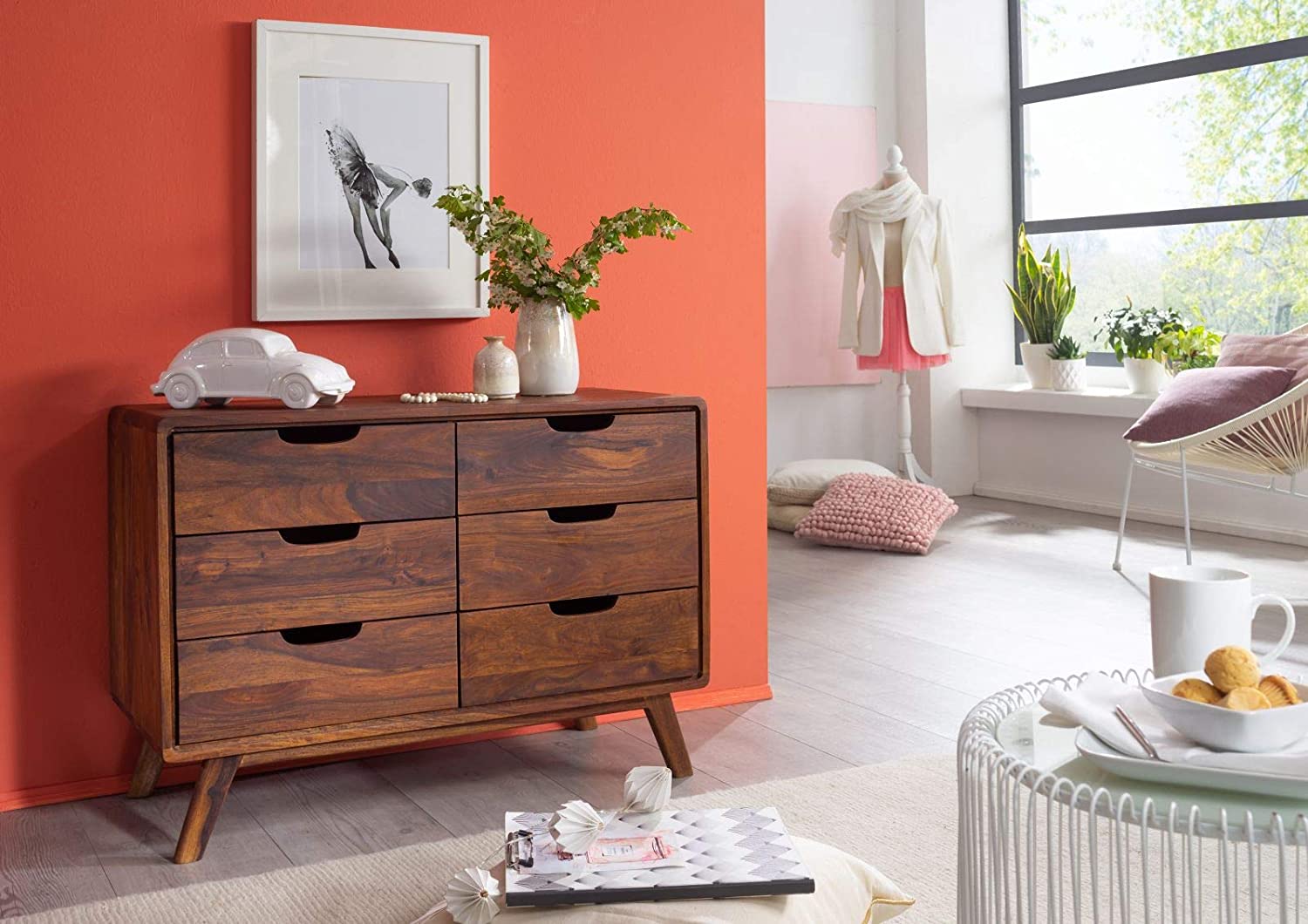
This piece of furniture participates in the interior of the living room less often. Basically, it is bought for placing clothes in apartments, where the living room is the only living room. Space is divided into several functional areas, while the chest of drawers can be both a receptacle for clothes and a partition. They often try to choose a model with a mirror and a lot of drawers. If there is already a mirror in the interior, they purchase a model with a TV shelf. This allows you to save some of the space significantly.
Note: Sometimes, there is enough space in the living room to equip a recreation area or a children’s play corner. An excellent solution would be to use the bay window, in which the chest of drawers can become storage for children’s toys.
Whatever the furniture (soft, modular, built-in, hanging, radius), arranging the living room depends on the material of manufacture, which is directly related to the design style. Although, in some cases, ergonomic furniture is appropriate. For other areas, one cannot do without the familiar classics. Therefore, in the third interior composition, the emphasis is on mixing classic and ergonomic furniture.
Material
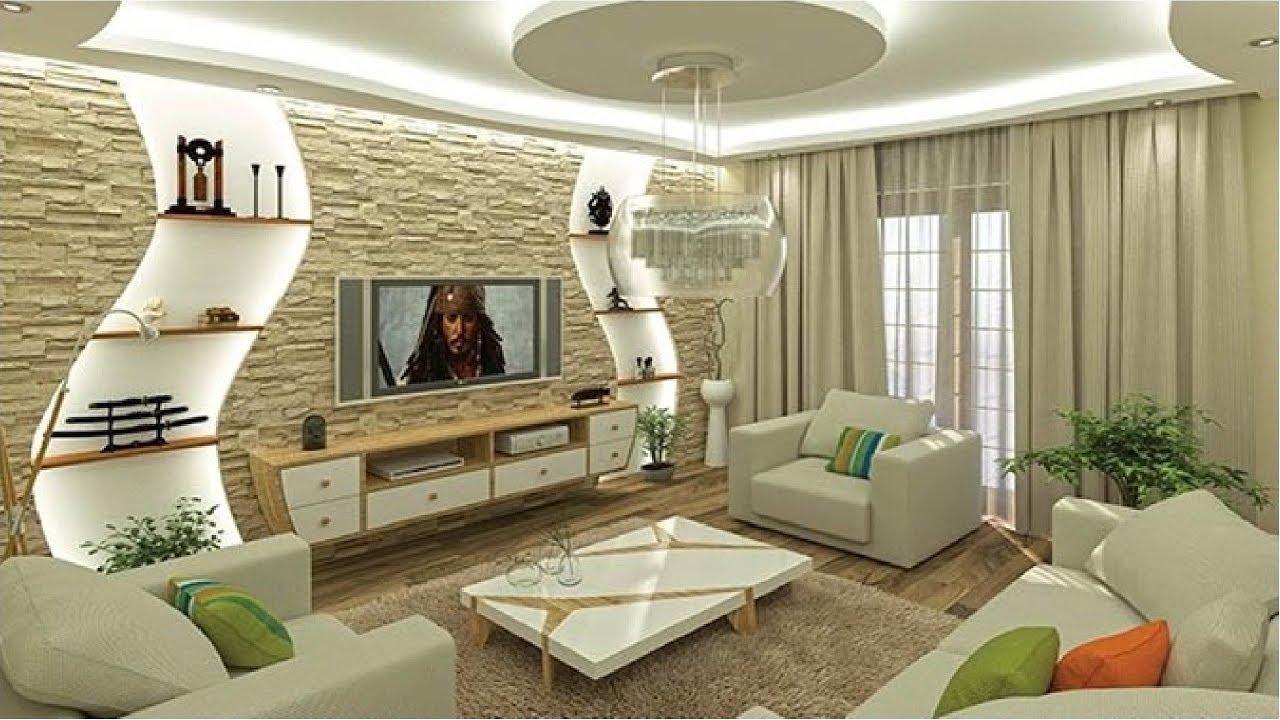
Different raw materials are used in modern furniture production. From a wide range of materials, we will note several that are most appropriate for the interior of the living room.
Wood
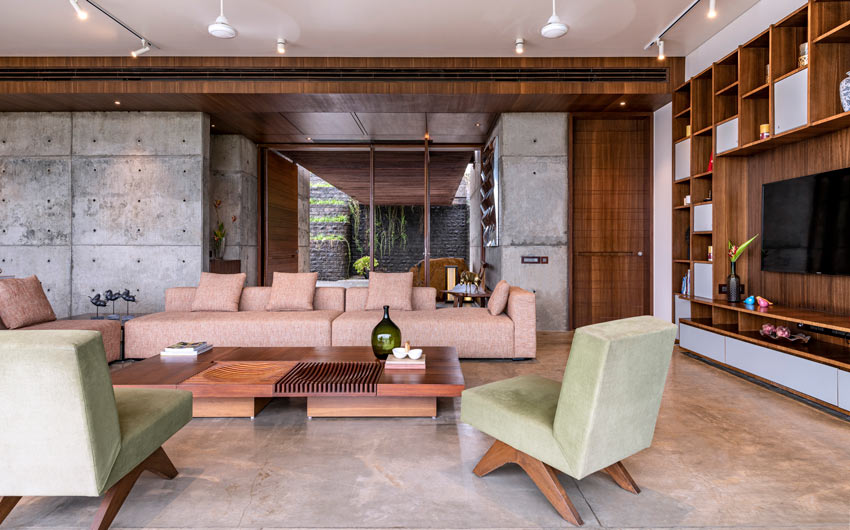
This material is the best raw material for living room furniture. The tree is environmentally friendly. During operation, it does not emit harmful substances into the air. It is used to manufacture tables, wardrobes, dressers, dining chairs, upholstered furniture frames (sofas and armchairs), and shelving. In addition, side tables with side tables and drawers are made of wood. The tree is distinguished by its durability, allows surface varnishing in case of need for surface renewal.
Note: The most demanded products are wenge oak, teak, beech, maple, Merbau, boxwood.
Such an array is notable for its hardness, and this furniture does not lose its appearance for decades. However, due to the hardness, wood processing becomes more difficult. Often, varieties of lower average hardness are used in production: elm, walnut, apple, ash, cherry. Such raw materials are malleable during processing, although their performance characteristics are lower.
Budget furniture items are made from chipboard, fibreboard, MDF, and veneer. Chipboard is a compressed material from wood processing and sawmilling waste with the addition of formaldehyde resins. Fiberboard differs in manufacturing technology: in creation, the array is ground and treated with steam. Such materials are often used to create wardrobes.
Note: MDF is environmentally friendly compared to the two previous materials and is more expensive.
This is a progressive material that allows you to perform milling in the form of a variety of patterns. A veneer is a thin sheet of shavings that cladding the facades of chipboard or MDF surfaces. Unfortunately, all varieties are inferior in quality and durability to wood, and they are unstable to prolonged exposure to moisture.
Metal
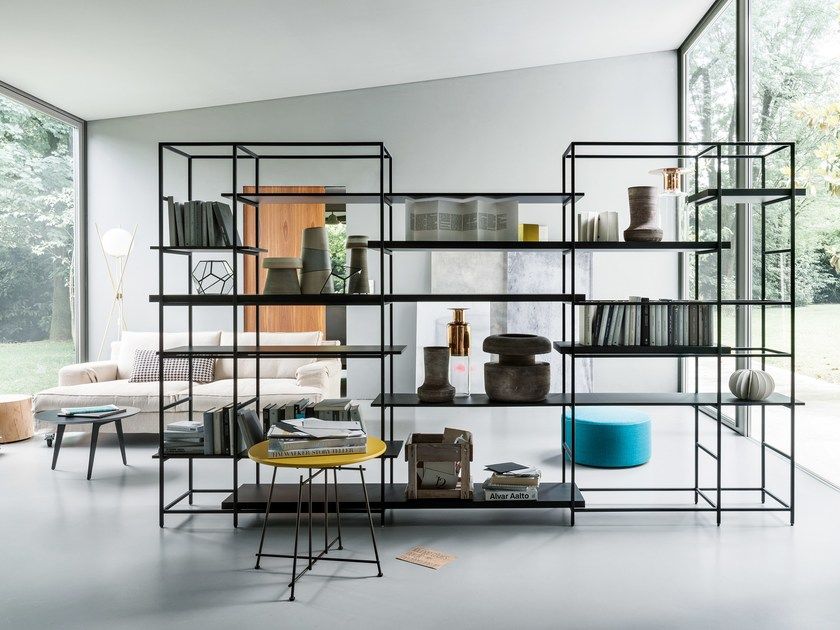
Metal is the strong and reliable frame material. It is used for upholstered furniture, supplying sofa structures with steel transformation mechanisms. Due to the metal base, the models are reliable, practical, and durable: they provide for daily operation for 10 years or more. The use of metal as support for a sofa, coffee table, armchairs prolongs the service life and increases the weight load.
Note: Metallic elements are especially appropriate for furnishing details in modern interiors, emphasizing chrome-plated furniture elements.
Glass
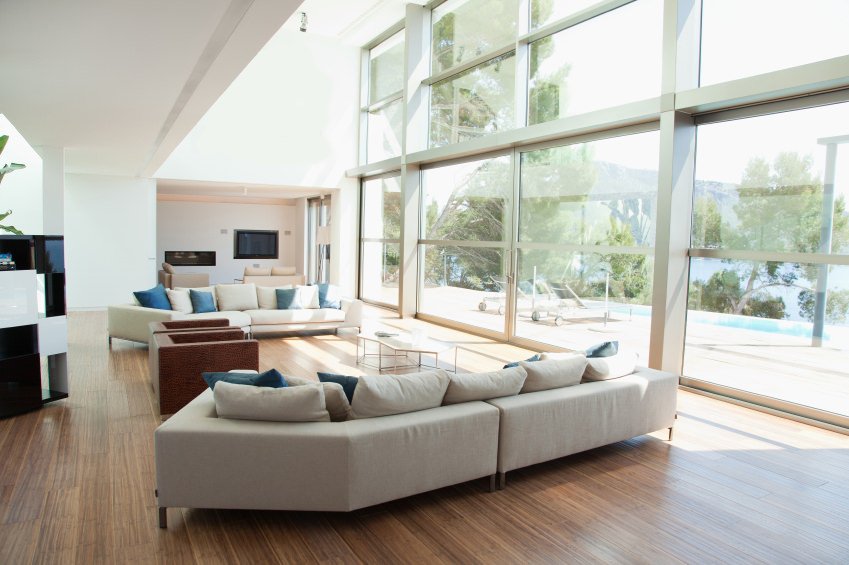
Despite its apparent fragility, glass is a popular component of room furnishings. It is especially often used for the tabletop of a coffee or side table. For the room arrangement, a reinforced material with a glossy surface is used, which is resistant to accidental mechanical damage. Glass elements of furniture bring lightness and airiness to any interior. In addition, their use allows you to unload the massiveness of the sofa, cabinet, rack.
Note: At the same time, tinted or tinted glass in dark shades is a trendy type of raw material for furnishings. In addition to countertops, it is used in the facades of display cabinets, shelving, pedestals, side tables.
Upholstery
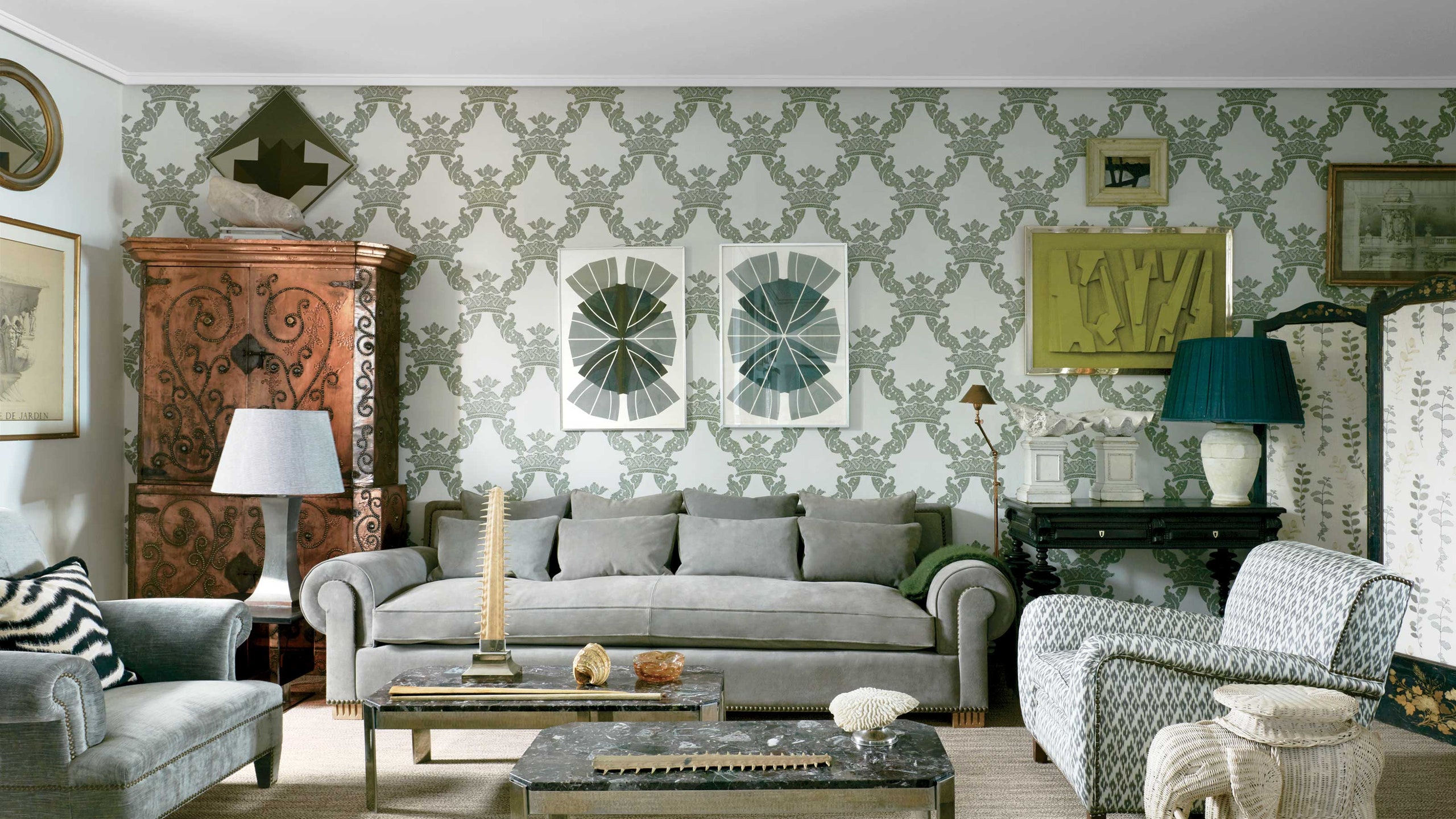
Upholstery of upholstered furniture is an important component of a beautiful and practical appearance of a sofa and armchairs. Since the living room is a place with high traffic, the upholstery material is selected based on practical considerations. It can be leather, eco-leather, leatherette, and textiles. Leather sofas are practical, and this material is environmentally friendly, moisture-resistant, and easy to clean. It is durable.
The material imitating leather is a leather film glued to a textile base. The film lags behind the base in long-term operation, so it is less resistant to constant cleaning. Textiles allow moisture and air to pass through, and such upholstery is environmentally friendly. Furniture with it is cheaper. However, its service life is noticeably reduced, even if it consists of dense and strong interwoven threads. The most popular types of upholstery are microfiber, jacquard, furniture tapestry.
The choice of material for a hall in an apartment or a private country house is also based on practicality. Often, to extend the service life and attractiveness of upholstered furniture, structures are decorated with euro covers, packing the sofa and armchairs completely.
Note: However, transforming furniture cannot always be covered with dense textiles with an elastic texture resistant to pets’ claws. They will not work with rattan products and wicker chairs.
Dimensions
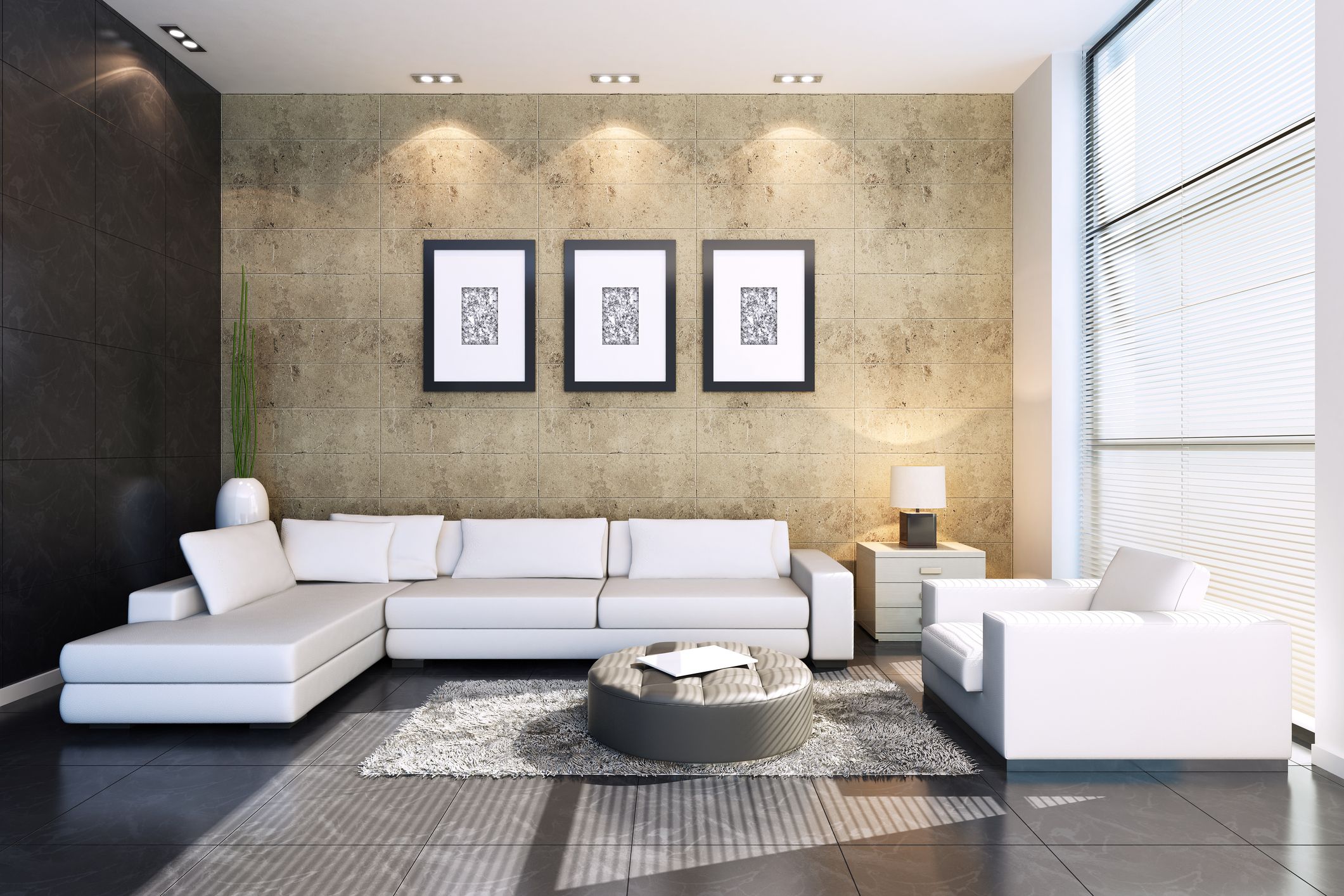
The living room furniture dimensions are subject to the available space and the total number of details in the guest area. Conventionally, furniture is compact, small, standard, medium-sized, and large. However, a distinctive feature of modern furniture is its spaciousness and compact form. This allows, if necessary, zoning to place in the living room, which is the only living room of the dwelling, bedroom furniture.
The folded sizes of sofas for the living room can be 130-250 cm in length, 50-120 cm in depth. The parameters of the corner models are 65-85 cm in length and more, while the length of the models can vary from 160 to 220 cm. Unfolded convertible models range from 70 cm in width to 240 cm and 180 to 260 cm in length.
The depth of the shelves varies from 40 to 60 cm. In this case, the length can be from 1 m to 2.5 and more (up to installation on the entire wall). Sectional parts can be 47, 55, 165 cm in length. The height varies from 180 cm to 2 m. Combined cabinet models can reach 80 cm in width, 240-250 cm in length, and up to 2 m in height. The average parameters of coffee tables are 50x50x45, 80x80x35, 100x100x40, 130x60x40, 140x160x45 cm (the last indicator is the height).
The side tables are higher and narrower. Their dimensions are 70 – 88 cm in height, length and width vary from 40×40 cm to 60×60 and 70×70 cm.Sometimes models provide an increase in the tabletop due to pull-out shelves that add to the tabletop from 20 to 40 cm in length. Side tables can be up to 1 m long and 80-100 cm wide. The sizes of tables for the dining area depending on the number of people. They can be 1-2.5 m in length, while the width can be in the range of 80-120 cm.
Colors
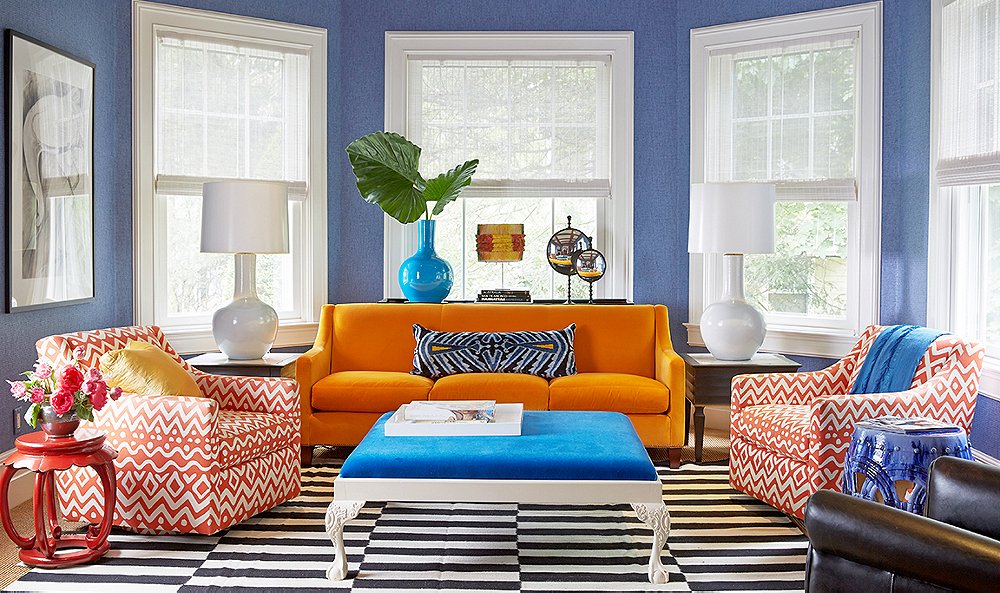
Living room furniture colors are varied and depend on several factors:
- The degree of illumination of the room
- The area of the hall
- Features of color influence a person
- Taste preferences
Conventionally, the Color Palette can be divided into Four Categories:
- Natural
- Monochrome
- Pastel
- Saturated
Shades of upholstered furniture can be natural, light, rich, and monochrome. In this case, the basis of the color is determined by the upholstery, the color of which can be any within the normal range. In the living room, flashy and acidic colors are unacceptable: soft, restrained tones are important, contributing to creating a relaxing atmosphere.
The current shades of upholstery are sand, brown, light oak, wenge, Sonoma, light gray, cream. Light colors of the palette are no less in demand: milky, ivory, smoky tones. Wine, blue and black colors today give way to soft contrasts: in the center of attention are yellow, turquoise, terracotta, lilac shades of the color palette. Colored furniture brings cheerfulness to the interior.
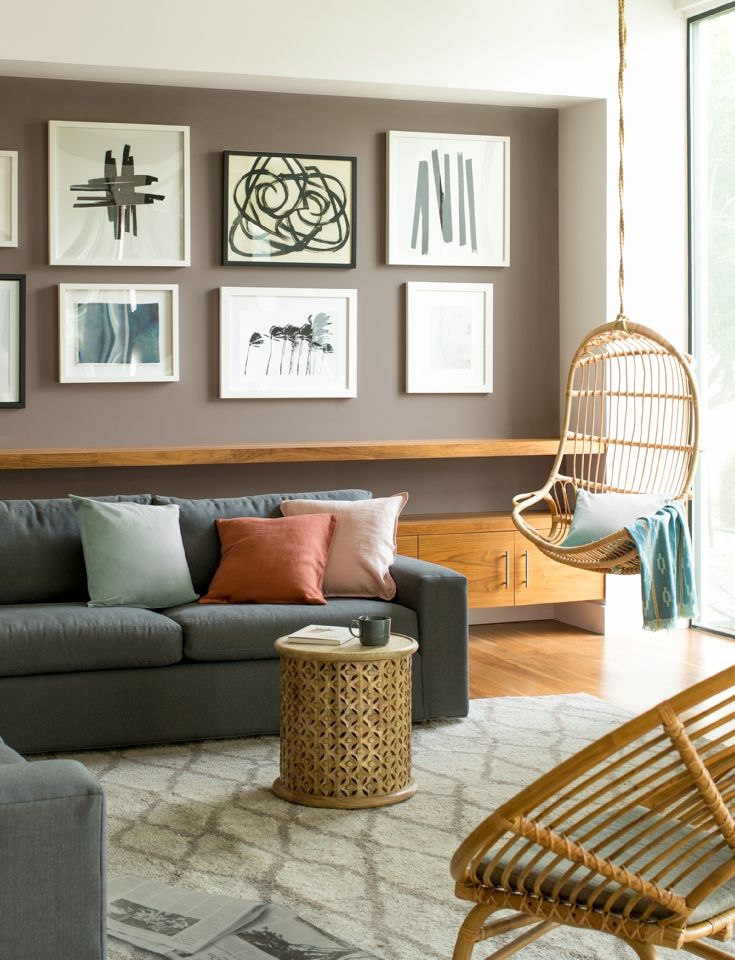
Solid wood furniture predominantly adheres to natural colors. In this case, the tones are tied to a specific type of wood (for example, walnut, oak, ash). Popular paints for cabinets, dining and coffee tables, pedestals, shelves, and shelves are mahogany, rowan, teak, cherry, pink and ebony, pine, Zebrano, bog oak, acajou, ebony. Each tone has a peculiar texture: shades can have tone transitions, graininess.
Products from wood derivatives are made not only in natural shades: this type of material is easier to paint. Furthermore, it allows the surface to be pasted over with a film. Therefore, in addition to brown and beige colors, this furniture can be yellow, orange, white, cream, greenish, and olive. If necessary, the color of such products can be changed (for example, by updating old furniture to match the interior in any color scheme). This is done utilizing a self-adhesive film, choosing the desired shade.
The color of the glass inserts is various. In addition to the classic glass and mirror facades of the cabinet and the coffee table, unique designs of glass in chocolate and black colors are used in the arrangement of the hall. Outwardly, such pieces of furniture look stylish and expensive. However, due to the color shade, the furniture successfully blends into the overall interior of the living room, giving it uniqueness and special aesthetics.
Products for the dining area of the living room are made in different colors. These are light shades of the palette: white, light gray, beige, light brown. This furniture is not basic, so it should not stand out.
Style and Design
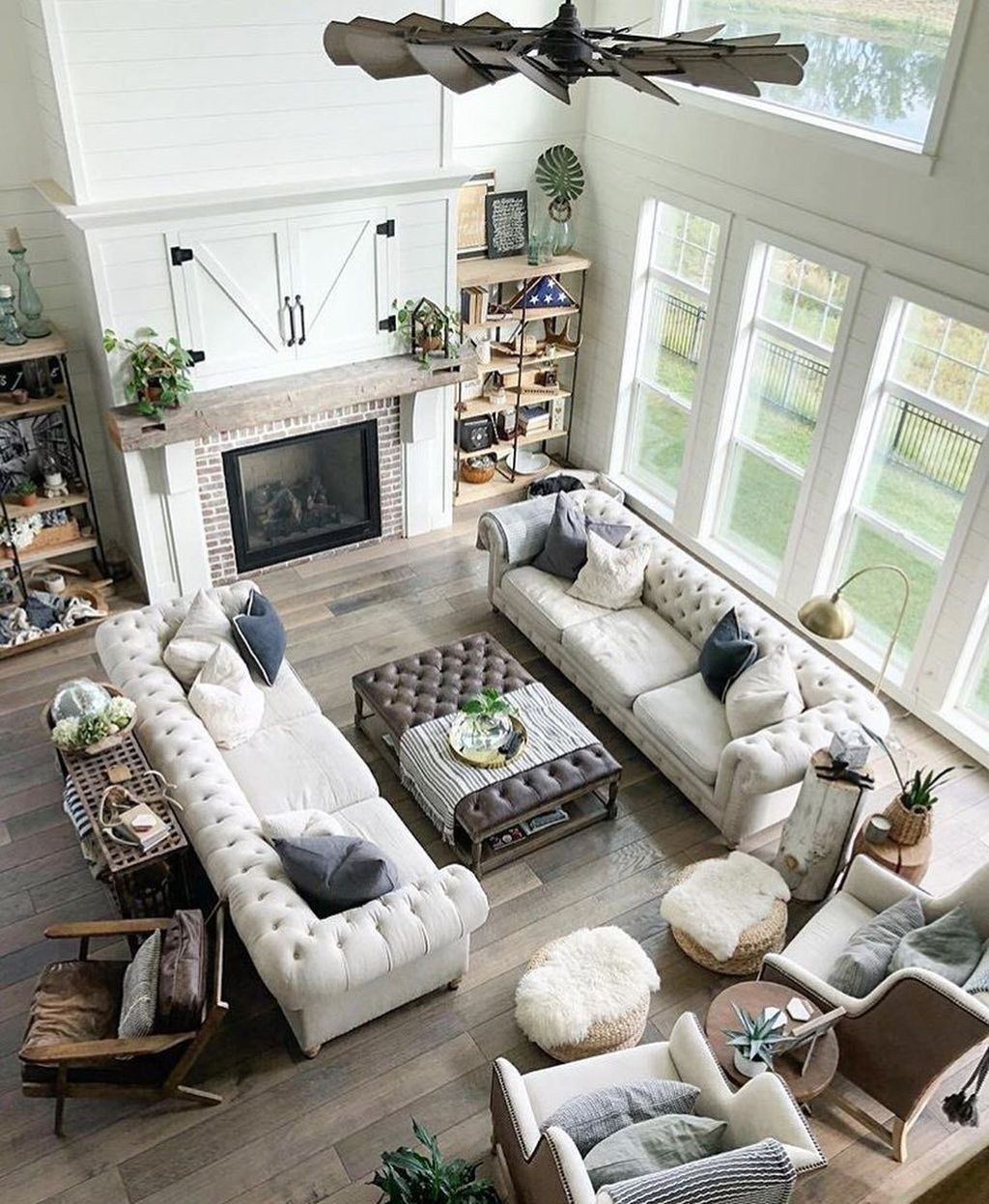
The main factor that determines the design of furniture and its layout is the chosen style of the living room. Due to the design idea, you can convey the desired atmosphere, make the interior cozy. Today, the popular design directions are classic, modern, ethnic, vintage styles.
Classic
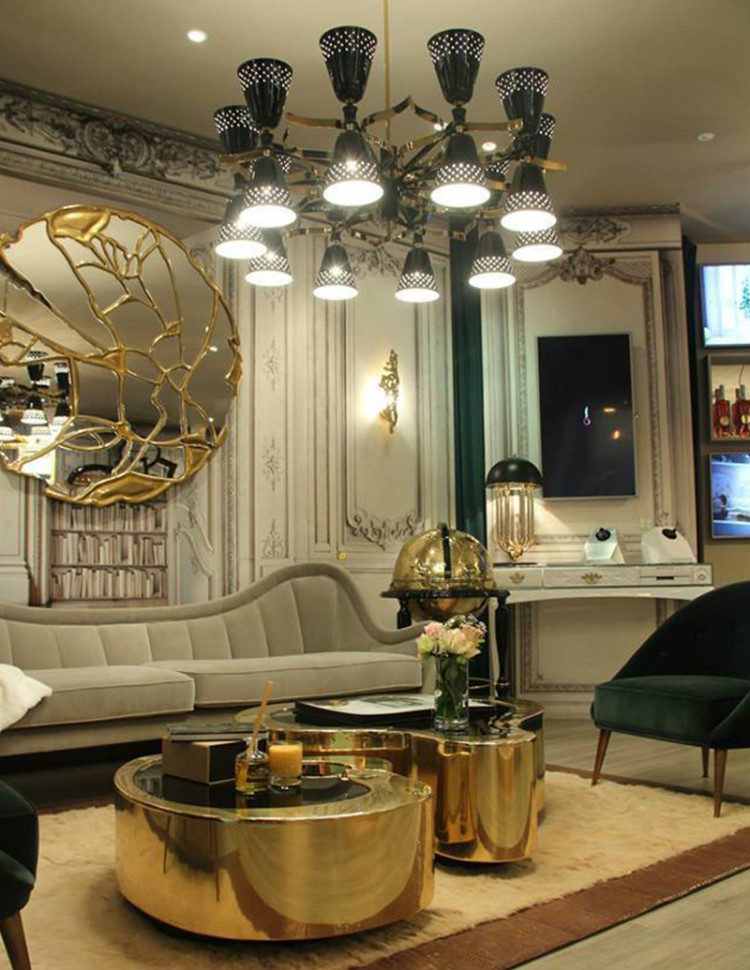
This trend includes classics, neoclassical, classicism, Italian style. We can also rank the interior in the English style among them. These interior compositions require elegant furniture and the presence of elements of palace solemnity. This is leather upholstery of upholstered furniture, necessarily expensive solid wood furniture with carved legs and gilding. A chest of drawers with a mirror is acceptable.
Neoclassicism is somewhat simpler: it is close to modern trends: the tones of the furniture are lighter, but without gilding, the furniture loses its solemnity. The hallmark of the classic design branch is the symmetry and naturalness of the furniture. It is often massive and is suitable mainly for spacious living rooms, although recently, brands have been trying to produce compact models made of wood.
Modern
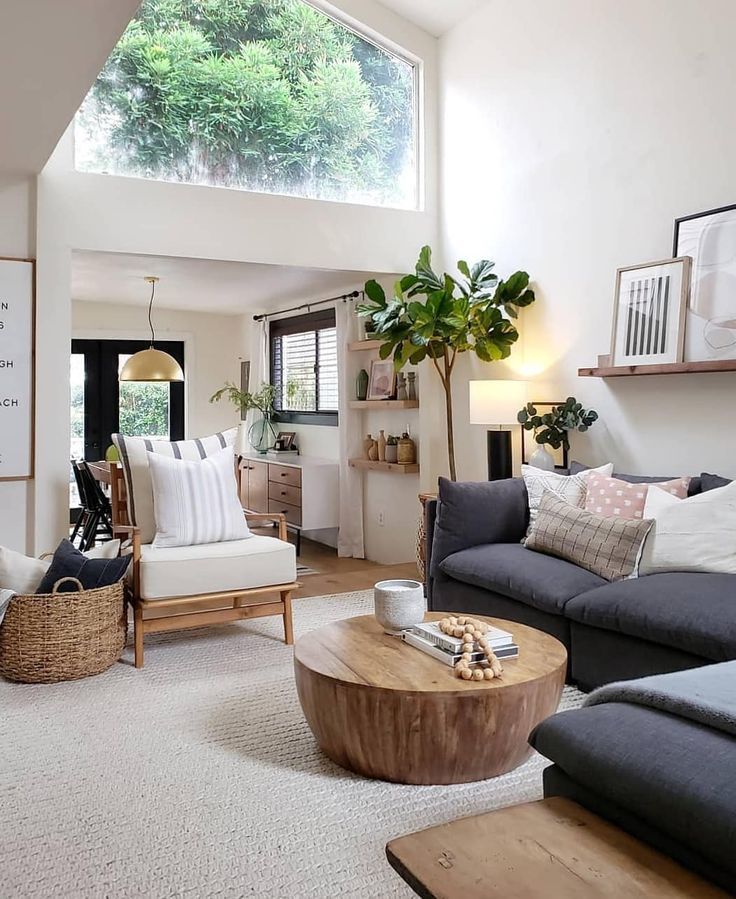
This group includes many areas that are distinguished by stylish and original solutions. Minimalism, modern, hi-tech is in demand. Minimalism is characterized by the use of modern materials with an abundance of metal structures. This is furniture on a metal frame, characterized by ergonomics and, more often, light shades of the color palette, bringing lightness and a sense of spaciousness to the interior. No frills: everything is simple and strictly functional, the lines of furniture are straight, without bends.
Modernity allows for elegance: sofas and armchairs can have an unusual shape; instead of cabinets, racks and console shelves are used. Coziness is appreciated but without massiveness. The priority is the wood of valuable hard species, curly lines with sophisticated carving and inlay.
High-tech does not allow furniture from random things; mechanisms are welcomed. However, furniture items should be made of high-quality synthetics, glass, stainless steel, and no decorations.
Fancy
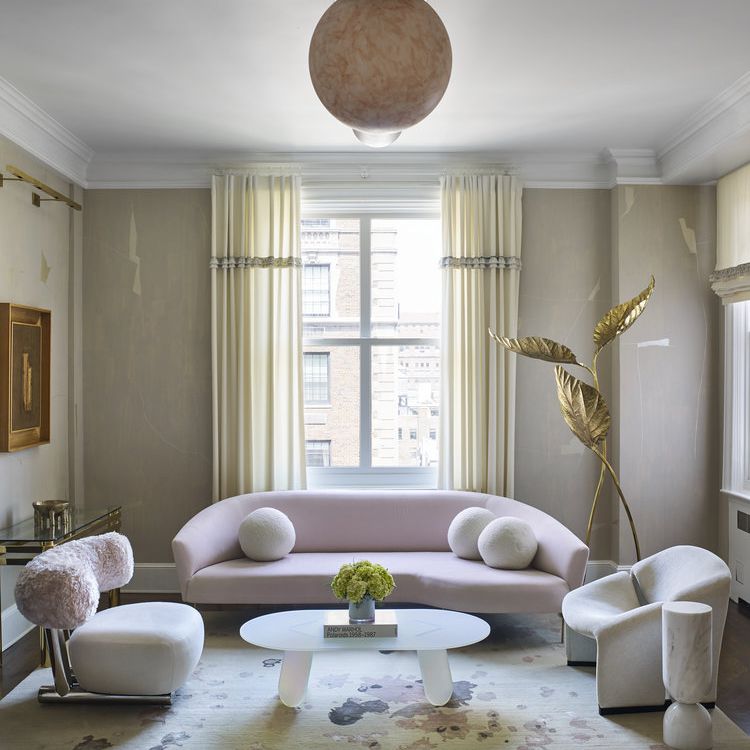
Among other areas of design, loft and grunge are fashionable styles for decorating the living room. They are distinguished by an imitation of a dwelling for an abandoned construction site. It combines two styles of using expensive furniture in the interior setting. It can be different in color, design, but it must be branded. In the avant-garde style, an unusual form of furniture is welcomed, so it is often made to be the hall’s central element.
Ethnic
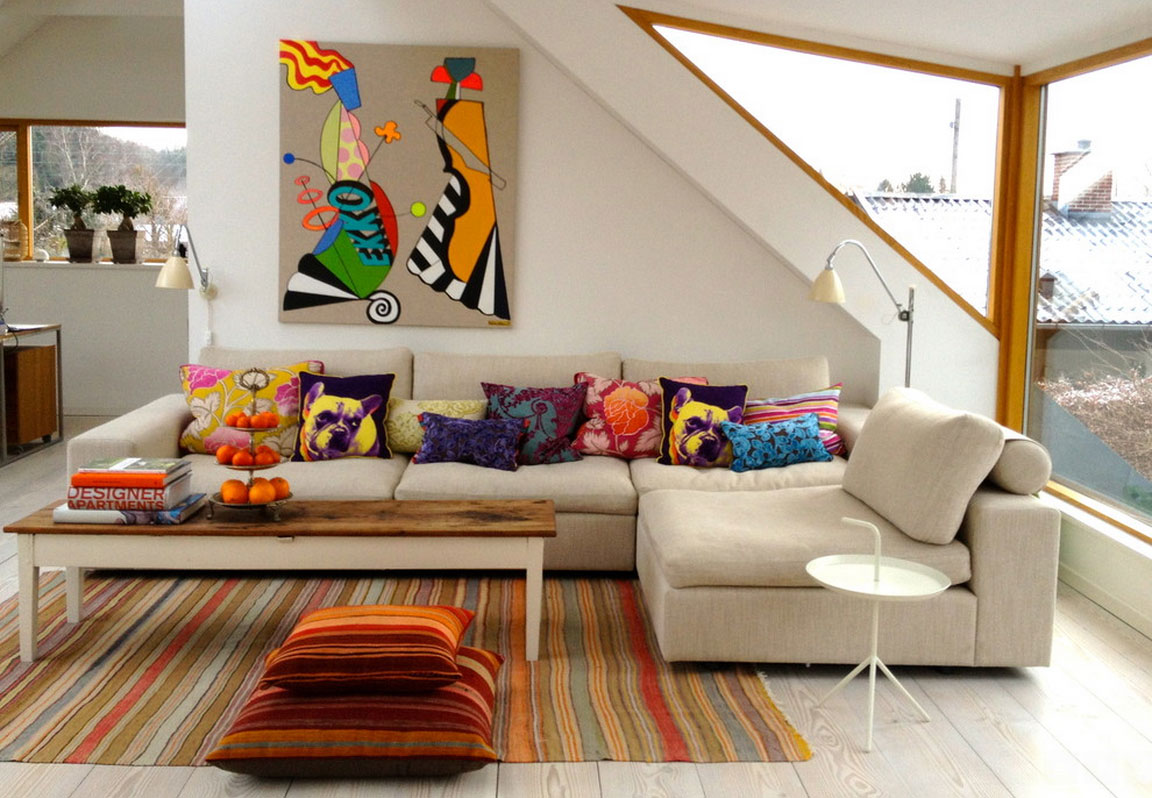
This category includes oriental, Chinese, Arabic, Scandinavian styles, each of which has its own personality. For Chinese and Japanese styles, the space and lightness of lines are important. Arabic design implies an abundance of carved and curly elements, the presence of gilding on the legs of a sofa, armchairs, and the use of rich colors in the arrangement. The furniture must be elegant. For greater similarity with a tent, it is complemented with all kinds of poufs and pillows.
Vintage
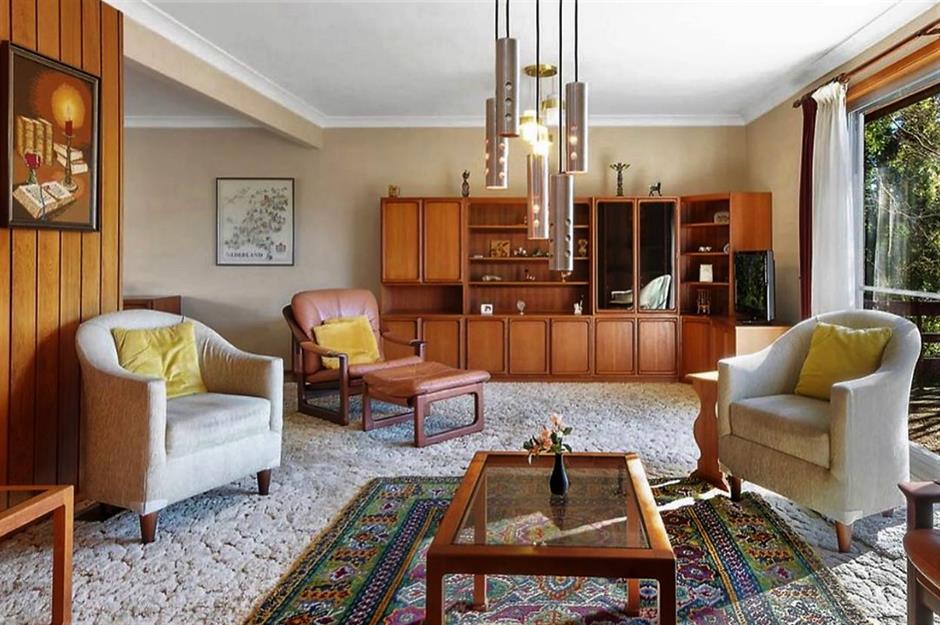
These areas include retro, Provence, antique style, and baroque. It is important to convey the desired atmosphere through shade, form. In each case, the stylistic solution is individual. For example, furniture can be painted white with carved legs or simple and deliberately rough.
The use of wooden structures and derivatives of the array is allowed. For example, it should be ceremonial and pompous, claiming scope and power in the antique style. Bizarre forms characterize Baroque. The sofa and armchairs, made with an abundance of ornate decorative elements, can have gilded armrests, legs, and a kind of crown along the top of the seat.
How to Furnish Correctly?
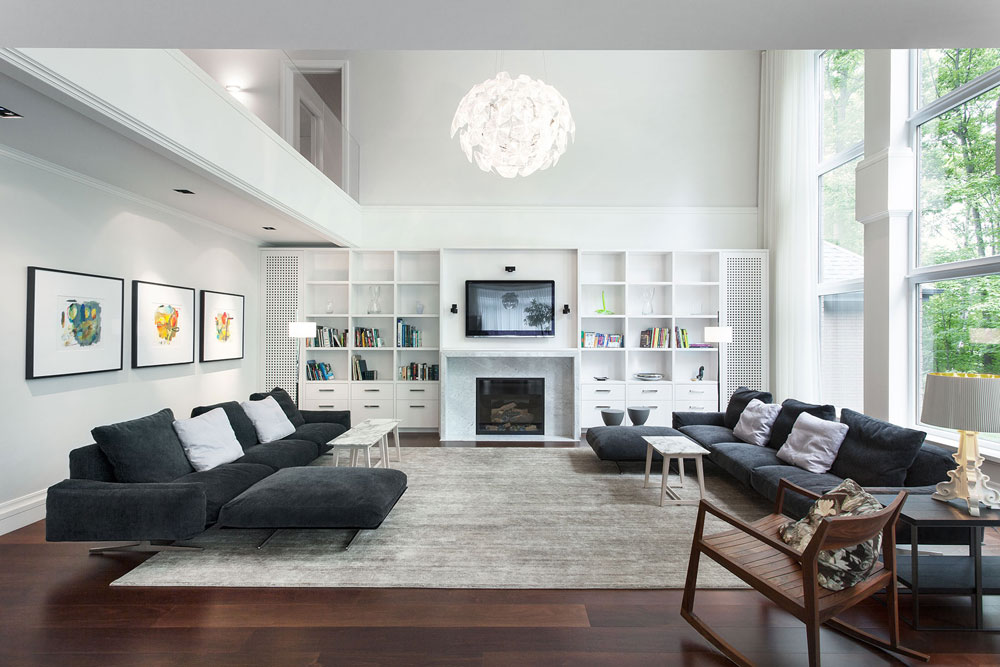
It is not enough to buy furniture. For the harmony of the interior, it is important to arrange it correctly. The main focus of any living room is the sofa. More often, it is not placed in a corner but placed in the center of the wall. Opposite the sofa, they arrange a video zone: they highlight the wall with contrasting wallpaper, put a rack with open and closed shelves, and a place for plasma. All small parts are put away in the drawers.
Sometimes the arrangement is arbitrary. For example, if the living room is located in the attic, we could place the sofa and the window. If it is necessary to zone the space, a sofa, a rack, a wardrobe can be located across the room. If space is sufficient, an accent guest area can be in the center of the room.
